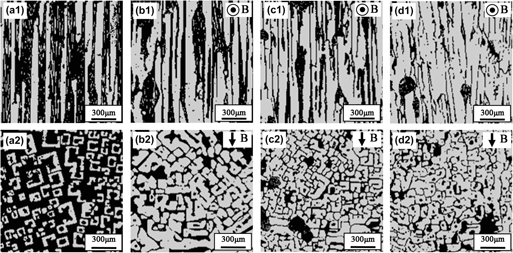Article contents
Effect of a transverse magnetic field on solidification structure in directionally solidified Al–40 wt% Cu alloys
Published online by Cambridge University Press: 11 January 2016
Abstract

Effect of a transverse magnetic field on macrosegregation and growth of primary Al2Cu dendrites in directionally solidified Al–40 wt% Cu alloys was investigated experimentally. The experimental results indicated that the magnetic field caused the formation of channel-like and freckle segregations. It was also found that the application of the magnetic field benefited the growth of primary Al2Cu dendrites and the axial segregation. Moreover, the magnetic field decreased the primary dendrite spacing and the mushy zone length; however these effects weakened with the increase of the magnetic field intensity. The above experimental results should be attributed to the formation of the thermoelectric magnetic convection during directional solidification under the transverse magnetic field.
- Type
- Articles
- Information
- Copyright
- Copyright © Materials Research Society 2016
References
REFERENCES
- 4
- Cited by




